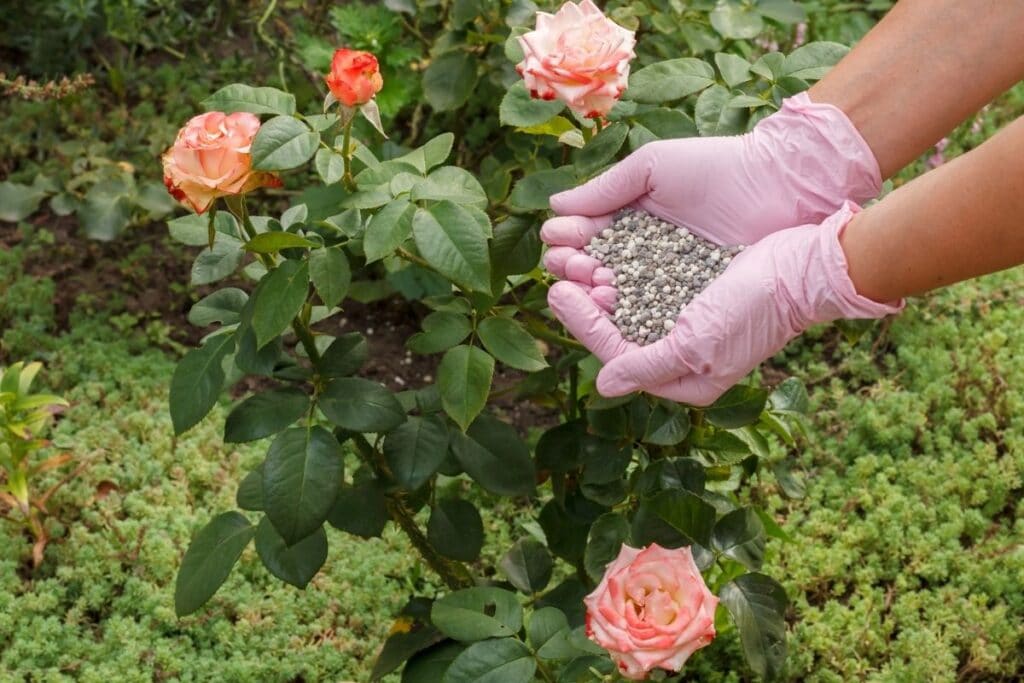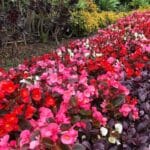A plant is considered healthy if it has lush foliage, vibrant flowers, and an overall characteristically perked up appearance. In terms of roses, the leaves are normally deep green with hints of red and thorny stems in glossy, darker shade of green while the flowers, despite the petal count and formation, are delicately vibrant and inviting.
The general health of a rose plant is attributed to several important elements such as light, humidity, temperature, and water, among others. When the growing condition is optimum, the rose plant will thrive and bloom. But there is another controllable factor that the plant needs to improve its growth and this is the fertilizer.
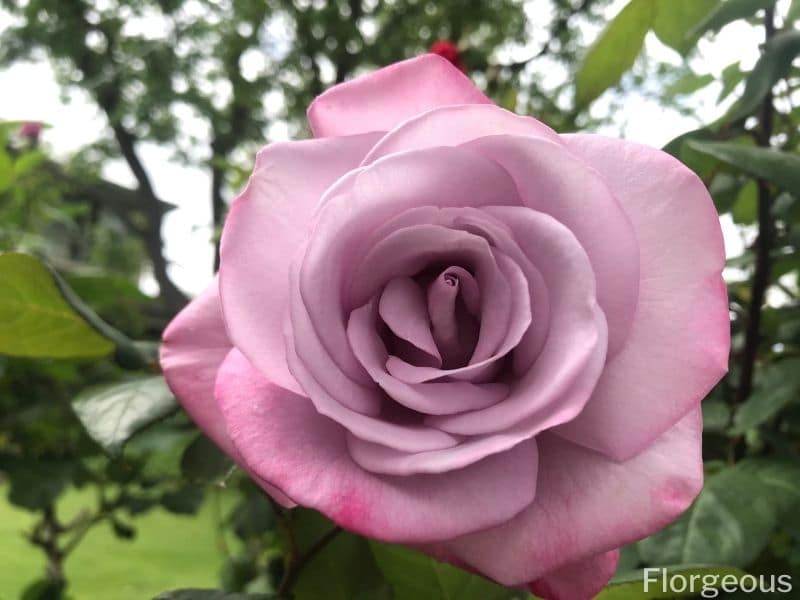
What is a fertilizer?
A fertilizer is basically an agricultural input that improves soil quality by making it fertile. In gardening and farming, a fertile soil is necessary for plants to grow healthy so gardeners and farmers can have a good harvest.
People in the past observed that when plants and animals die and are left to rot, they eventually create humus which makes the soil rich with nutrients, promoting healthy growth in plants. They learned from this and used plant and animal wastes to make their land fertile.
As the field of agriculture advanced, the key nutrients needed to improve plant quality and yield were identified and the commercial fertilizers we know today were developed (1).

Why is fertilizer application important in growing roses?
The rose plants have its importance in floriculture, landscape, medicinal, and even culinary industries. In many parts of the world, it is considered an important commodity so the production of this plant is given priority.
Fertilizer application, also known as feeding, is a significant practice in growing roses as it dictates the quality and quantity of flowers produced, as well as the other parts of the plant that contribute to their marketability, e.g. leaf color, stem length, etc. (2).
It is likewise important for hobbyists to keep track of their feeding schedule to keep the garden abloom come flowering season and to help prevent diseases and pests.
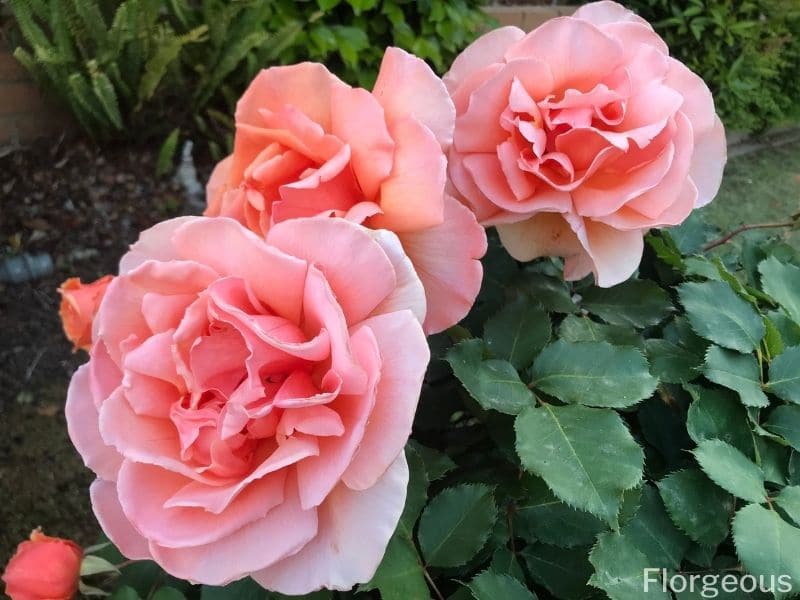
Plant Nutrition
Like humans, plants need essential elements for proper nutrition. These elements are categorized as either macronutrients, those needed in large quantities, or micronutrients which plants use in smaller amounts. Fertilizers supply these elements in a way that can be readily absorbed by the plant cells.
Among these elements, the most crucial ones that are often found deficient in soils are nitrogen (N), phosphorus (P), and potassium (K) (3). N is key in the formation and growth of leaves in plants, P is responsible for development of flowers and fruits as well as root growth, and K facilitates in the general plant processes like photosynthesis, transpiration, and respiration. This is why most commercial fertilizers supply a mixture of these 3 elements in varying ratios.
Fertilizer bags usually indicate the fertilizer grade or mixture of elements in this manner: N-P-K. For example, a fertilizer with a grade 5-10-5 has 5 parts N, 10 parts P, and 5 parts K. The phosphorus is higher which means that this is the fertilizer you should apply if your soil needs all key elements but a little bit more of P which will improve root formation and flowering (3).
Other elements often needed by plants, especially roses, are calcium (C) and iron (Fe). Calcium improves plant vigor and strengthens cell walls which the plant needs to ward off pests and diseases. Along with magnesium, this rose food is known to keep roses resistant to black spots. Iron works with nitrogen in promoting healthy foliar and cane development and is responsible for the healthy dark green color of the bush.
Types and Forms of Rose Fertilizers
There are two types of fertilizer: synthetic and organic or inorganic fertilizer.
Organic fertilizers
Before modern fertilizers were developed, biodegradable materials and by-products from food production were used to fertilize plants. Animal manure is the common source of nitrogen, phosphorus was obtained from bones, and wood ash was the source of potassium.
In the past and even in some countries today, human urine was used to supply vegetables and ornamentals with nitrogen. Roses benefited from this as they need frequent application given that there was enough rainfall to wash away the salt and dilute the urea (1).
Today, compost, dried blood, bone meal, manure, alfalfa meal, and cottonseed meal are still used as main fertilizers for roses.
Inorganic Fertilizers
Organic materials need the help of microorganisms in the soil to break down and it can take up to several months before the elements become available in consumable forms. Because of the need to speed up the accessibility to these nutrients for agricultural production, synthetic fertilizers were developed.
These fertilizers were obtained from by-products of the petroleum industry and upon the discovery that plants take up nutrients regardless of source, many companies began manufacturing inorganic fertilizers. They improve yield and are cheaper because of mass-production (2).
Some common synthetic or inorganic fertilizers are ammonium nitrate, urea, muriate of potash, potassium sulfate, and ammonium phosphate.
Modern fertilizers come in different forms but you can easily distinguish organic from the inorganic ones. While organic rose fertilizers are still often sold in dry clumps and powdered forms, inorganic fertilizers appear in several processed, synthetic forms (1).
Granular
Granular is the most common form of synthetic fertilizers. It is easy to apply, often top-dressed around the plant and can be readily utilized by the plant upon watering. Depending on the need of the plant, application may be in between 2-3 months since the fertilizer easily gets leached.
Powder and Liquid
Fertilizers in powder form are usually diluted in water and manually applied to the plant. Liquid fertilizer doesn’t need to be mixed before it is used.
Some are recommended to be applied to the soil while others can be sprayed directly onto the leaves. These forms of fertilizers are quickly absorbed by the plants and are often used to help plants develop roots faster.
Pellet
Pellet fertilizers are also called slow release fertilizer or time-release fertilizers. They are polymer-coated which delays the release of nutrients, providing the plants with a steady supply of nutrients over a certain period of time, usually 3-12 months. This prevents the nutrients from leaching and avoids fertilizer burn in plants.
The use of organic fertilizer is the ideal way of fertilizer application. They promote the relationship with soil microorganisms that breaks down the materials into humus, creating a steady flow and long-lasting nutrient source in the soil.
However, it takes time before the plant can have access to these nutrients so for those who grow roses and other crops for production, the use of synthetic fertilizers is preferable. They readily provide the nutrients required and are easier to access but they can have negative environmental effects like killing beneficial earthworms and chemicals leaching into water reservoirs (1).
Which Fertilizer is Best for Rose Plants?
In rose growing, the use of a combination of both these fertilizers is a common practice. Established roses are heavy feeders and they rely on organic fertilizers for a steady supply of nutrients throughout the growing season. During the flowering periods, inorganic fertilizers are important in providing immediate nutrients ensuring lasting beauty of the flowers.
Since organic fertilizers like manure and compost take time to benefit the plant, they should be applied early. During land preparation, bone meal which is a good source of phosphorus is laid on the bottom of the planting hole.
Raw manure is either buried beneath the plant, away from roots’ reach or top-dressed and is best applied in autumn, initially serving as the plant’s protection from frost. Come spring this should be cultivated and should be ready to provide the plant with the nutrients (4).
Commercial fertilizers with a 5-10-5 grade or higher are good rose food for rose bushes. These are good for rose varieties that bloom once like species and heritage roses and should be applied annually.

Methods of Applying Fertilizer
There are several ways of fertilizer application that may depend on the type of fertilizer you have. Whichever way you perform the application, it is always important to wear the appropriate personal protective equipment of PPE to avoid coming in direct contact with the chemicals the fertilizers contain.
Broadcasting and Banding
Often how granular or pellet fertilizers are applied, broadcasting is performed by manually or mechanically spreading the fertilizer to the planting area. Top-dressing is a way of broadcasting followed by deep watering. Banding, on the other hand, is placing a band of granular fertilizer 2 inches to the side of the plant.
Deep Soil Application
This is the method of applying organic fertilizers since they need to be incorporated into the soil, away from the root system since they will still take some time to release the nutrients. Deep soil application can be done by ploughing it with the soil or by placing it at the bottom of the planting hole before planting.
Liquid Application
Powdered fertilizers are often water-soluble. This, as well as those that are already in liquid form is applied using sprinklers or spray cans. Some micronutrients like zinc and iron are absorbed through the leaves so they come in liquid form and sprayed on the foliage instead.
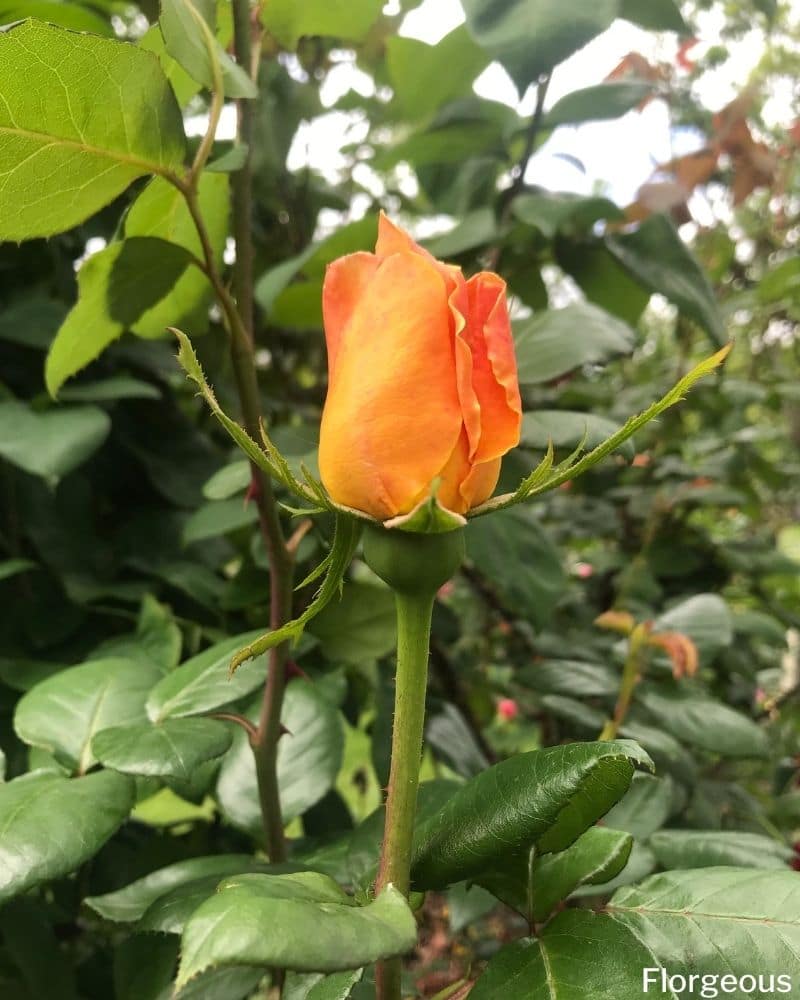
When to Apply Fertilizer on Roses?
It’s very important to know when to fertilize roses. Many rose growers stick with a basic fertilizer program that involves 3 feedings. This is usually practiced on container roses that repeat-bloom during summer. The first dose of fertilizer is applied during the end of winter, after pruning.
For newly planted roses, this initial application is usually high in nitrogen to encourage shoot and leaf growth. Then, again in early spring, when the buds are just starting to peek out, a fertilizer high in phosphorus is used to promote fuller and brighter flowers.
Repeat blooming roses benefit from this approach. Another application is performed 5 to 6 weeks before fall, and additional feeding may be necessary depending on the climate and soil type.
Fertilizer application on roses is fairly easy since commercial fertilizers include instructions on how to use them. But application shouldn’t be done just because you want to. The first thing to do when working with fertilizers is assessing the quality and fertility of the soil.
Soil Fertility
Soil testing identifies the nutrients present in the soil as well as its pH. Roses grow best in soils with 6-6.5 pH. This is slightly acidic and it is important to note that fertilizer application can increase the acidity of the soil and if it gets too acidic, the plant may develop a stunted growth and may have difficulty in absorbing the nutrients it needs (3).
A soil test also helps you identify the right fertilizers to apply. It will give you the idea of how low or high the NPK and other important elements in the soil are and that’s when you can correct them through soil amendment by fertilizer application.
See more: Best potting soil for roses
Nutrient Deficiency
In roses, deficiencies in these elements can be observed on the appearance of the plant, especially the leaves. Unusual yellowing of leaves may mean nitrogen is lacking, greyish green leaves may mean lack of phosphorus while potassium is lacking if the leaf margins turn brown (3).
When these symptoms are observed, apply the recommended fertilizer to improve the plant’s health. But make sure that you eliminate other possible reasons why the plant is exhibiting these. Some symptoms may be mistaken for an effect of pest infestations on the plant. Check for signs of pest on the plant and its vicinity before proceeding with the application.
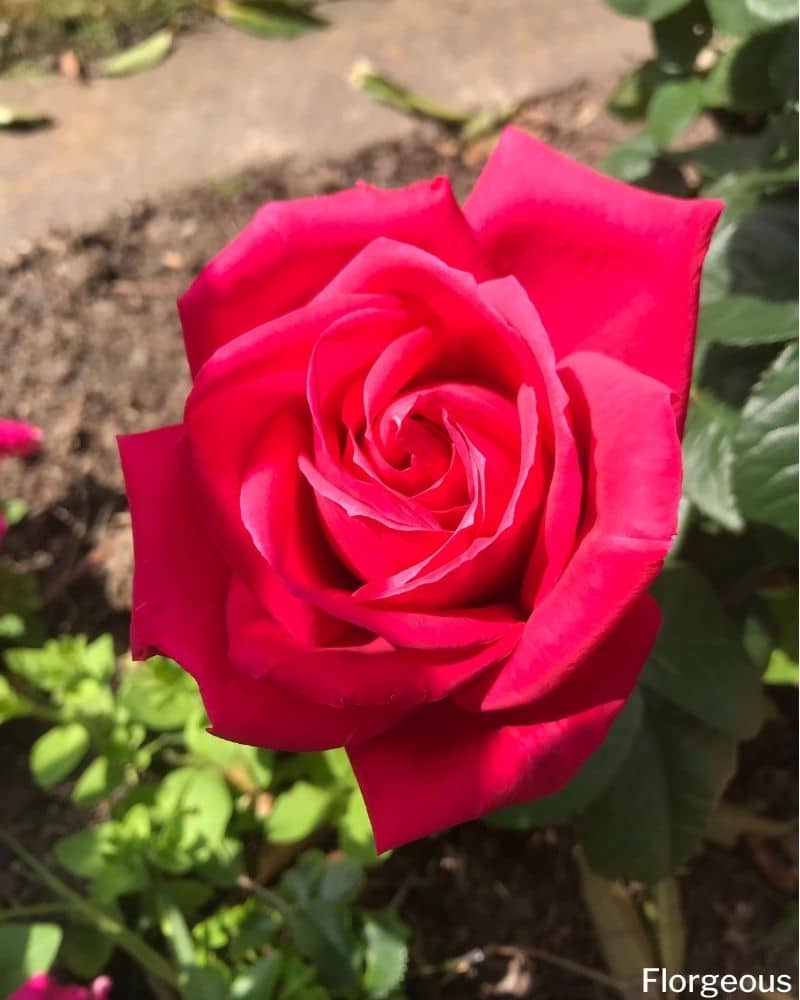
How Much Fertilizer Should be Applied on Roses?
Always consult the fertilizer label as to the recommended rate of application. The amount of fertilizer to be applied to your roses varies depending on the type and manufacturer of the materials but if you are using generic commercial and organic fertilizers, there are commonly recommended rates familiar to many rose growers.
In terms of manure and compost, it is desirable to apply a 2-3 inches thick layer. Cow manure, which is great for roses grown for cut-flower production, is diluted in water and allowed to soak for several days. A pint of this mixture is applied per rose bush once a month up to 7 to 10 weeks before winter.
Commercial fertilizers high in phosphorus can be applied at the rate of 1 lb per area of 80 sq. ft. Consider increasing the application rate for sandy soils which do not retain a lot of moisture and nutrients.
Make sure to follow up on watering after fertilizer application to prevent fertilizer burn on plants and to activate the release of nutrients in most synthetic feeds (6).
FAQs
Is 10 10 10 good for roses?
Yes. A 10-10-10 fertilizer contains equal proportions of nitrogen (N), phosphorus (P), and potassium (K). While it can be used for roses, it’s essential to consider the specific needs of your rose plants.
Is NPK 20 20 20 good for roses?
Yes. A 20-20-20 fertilizer provides equal amounts of N, P, and K. While it won’t harm roses, it may not be the best choice. Roses typically benefit from higher phosphorus (P) levels to encourage flowering.
Is 10 30 20 fertilizer good for roses?
Yes. A 10-30-20 fertilizer has a higher phosphorus (P) content, which is beneficial for roses. Phosphorus will promote root growth, flower formation, and overall plant health.
Do roses like coffee grounds?
Yes. Roses can benefit from coffee grounds! Coffee grounds are rich in organic matter and contain nitrogen, which supports healthy foliage growth.
See more: How to care for rose bushes
References
References
(1) Welsh, P. Pat Welsh’s Southern California Organic Gardening. Chronicle Books. 2010. P. 468.
(2) Wells, C. When and Where to Apply Fertilizer. University of Minnesota. 2009. P. 23.
(3) United States, Science and Education Administration. Roses for the Home. Department of Agriculture. 1978. P. 25.
(4) Conard, J. How to Grow Roses. Applewood Books. 2008. P. 124.
(5) Oster, M. 10 Steps to Beautiful Roses. Storey Publishing. 1989. P. 32.
(6) Mulford, F. Roses for the Home. The Ohio State University. 1932. P. 34.
Close
*featured image by depositphotos.com/mvg68

